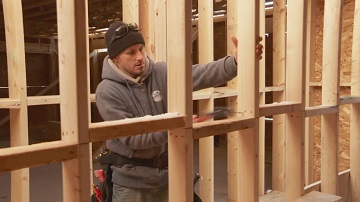 Friday, September 27, 2024
Friday, September 27, 2024  Friday, September 27, 2024
Friday, September 27, 2024 
P.E.I. is on track to join Canada’s other provinces in adopting the National Building Code in the new year, which has Island contractors and government busy preparing for the transition.
In 2020, P.E.I. will officially be rolling out the 2015 National Building Code, becoming the last province in the country to adopt the code.
The province says it’s currently preparing the final draft of regulations and plans to have the code in place before the start of the 2020 construction season.
“The industry itself is very excited about it because it brings a standard of building procedures to all of Prince Edward Island,” said Sam Sanderson, general manager of the Construction Association of P.E.I.
Sanderson said apart from a few municipalities — including Charlottetown, Stratford and Summerside, which have already adopted the code — there isn’t a building code in place.
He said that makes it difficult to ensure consistency when it comes to construction quality, and makes it challenging for those municipalities to enforce regulations that don’t apply province-wide.
“Contractors themselves are certainly having some issues knowing what to follow and what not to follow depending on the area you’re building in.”
Sanderson said the move toward adopting the code will make the industry easier to manage and improve training for skilled workers.
“It certainly benefits the industry as a whole because reputable contractors are building to the same standards, whether it be in Souris or Tignish or North Lake,” he said.
“What it’s doing — from a safety perspective — it’s offering protection for both, you know the homeowner, the financial institutions and the contractors. You’re comparing apples to apples, you’re comparing contractor to contractor, making sure you’re getting the same quality of a finished product.”